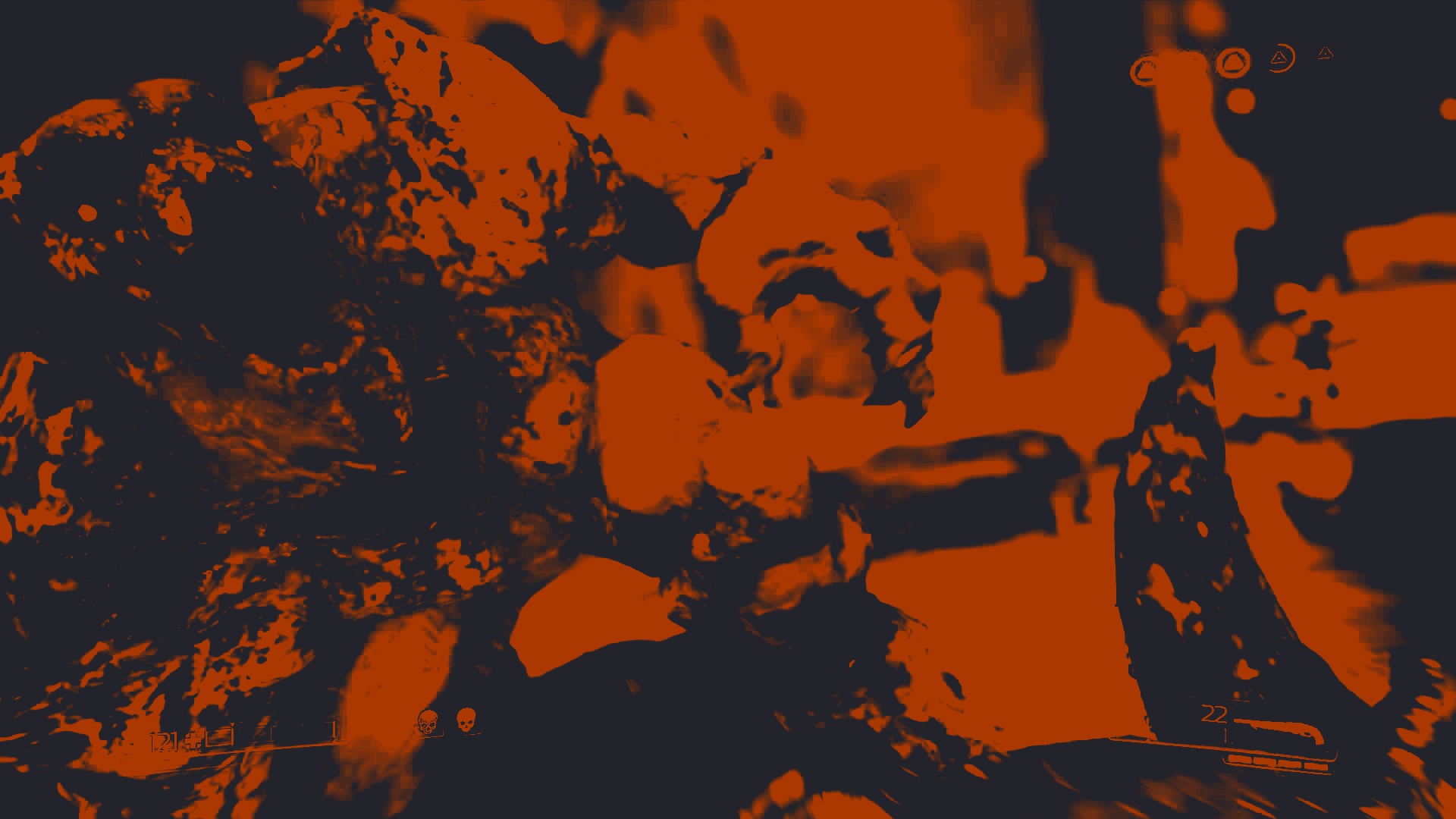
DOOM 2016’s demons love to be killed: everything about them is designed for it. A pattering of pulse-rifle laser bubbles smacks rhythmically against a minotaur-like hell knight’s leathery body and it luxuriates in the weapon fire as if receiving a massage; the “pinky” stampedes its bullish frame toward the player’s shotgun barrels like it’s rushing toward a cool lake on a hot summer day, hardly able to wait for the blast to knock it back on its cloven hoofs.
The game’s silent, “Doom Marine” protagonist and the demons are like soul mates—anti-love lovers whose entire raison d’être is the extermination of one another. Without the demons, the Marine doesn’t exist; without the Marine, the demons are nothing. It’s impossible to imagine either existing on their own—they’re interlocking puzzle pieces; they’re a glove and a hand. For this reason, killing the monstrosities in even the most grotesque ways feels not only necessary but natural. The world of DOOM exists as if inside a snow globe, dioramas of hellbeasts and soldier poised in eternal conflict, unfrozen only when the player picks it up and starts shaking to make the gibs fly around.
In another game, this could be a nauseating concept: horrible, brutal war everlasting. DOOM, though, is created to funnel the product of even the most torrentially bleeding heart into a nearly sanitary expression of human violence; sanitary only because there is nothing objectionable about the ferocity of killing required by DOOM. Its enemies are nothing like human, their metaphorical purpose clouded to the point that they represent only (as all self-respecting demons should) a living evil. There is no need to feel bad for these homicidal freaks. They’re avatars of hate, all gnashing teeth and snuffling rage with no purpose other than an instinctual drive to terrify and destroy. Kill them, DOOM says. Not only is it enjoyable, but it’s as benign a form of aggression as whaling on a punching bag. Both are designed for it and neither mind.
Take, for instance, the way the demons are constructed. They’re function before form, a series of silhouettes, not meant to be looked at in detail for long periods, and identifiable chiefly by their most basic dimensions: height, weight, horn placement, and posture. Every time the game transforms one of its sci-fi research facilities into a gladiatorial arena, the player performs a rapid-fire calculus based on which variety of demons stagger out from the glowing red hellmouths shimmering into existence around her. From a distance, considering the menagerie of threats, a million homicidal equations are rendered based on the variables of weapon selection (shotguns for face-to-face encounters, rapid-fire machine guns for blindly strafing the biggest creatures, etc.) and player health and ammunition count and demon variety, and nearby item pick-ups and on and on. At this range, the demons are dangerous shooting targets and nothing more.
In instances when the player does kill one of the monsters up close she sees their bodies explode like water balloons filled to bursting with red paint and a piñata load of cheerfully glowing health and ammunition pick-ups. The effect is too colourful and abstract to be earnestly revolting. In fact, there’s a cartoonish glee to all of it—it would be almost wholesome if it wasn’t for all the dripping entrails and spare guns lying around the game’s sparking, broken-down Martian laboratories and a Hell constructed of pools of blood and Paris Catacombs-style bone labyrinths. Everything is yelling in excitement, urging the player to do what DOOM wants her to do, from these visuals and the audio design, which shreds technicolour butt rock over the thumping IMAX bass drum of gunshots and roars, down to the creatures themselves. Look at them run and jump and scream in rage; consider them as a digital product carefully constructed for the sole purpose of frantic videogame destruction. (The pinky demons, in particular, come apart like slow-cooked pulled pork when the player rips apart their crusted flesh in a “glory kill” finishing move.)
The monsters’ fictional purpose, for anyone looking to question their willingness to enjoy killing them so much, reveals nothing else to worry over. The demons are only the most directly nasty arm of a science fiction corporation: they’re the physical manifestation of a hell that DOOM's scientists and capitalist monsters worship as the font of unlimited lucre. Killing the creatures harms no-one but the creatures themselves and the autocratic, filthily wealthy company that commands them like an army of literally evil jackbooted enforcers.
No other shooter equals DOOM in the design of such a perfect enemy+. In it, the player is morally unencumbered. There is nothing to cause hesitation. There is no sense that these demons are interested in having a conversation. Everything is designed for a pleasure so sick and near to human instinct that the mammal in our brain tries to recoil as the lizard in us hisses approval.
///
+ The Gears of War games with their roaring reptile men come closest; the Halo and Destiny series with their maniacally giggling and grunting assortment of alien soldiers are noteworthy, too. The humanoid structure of the former and the elaborate political motivations of the latter complicate both cases, though.
///
Reid McCarter is a writer and editor based in Toronto. His work has appeared at The AV Club, GQ, Kill Screen, Playboy, Paste, and VICE.